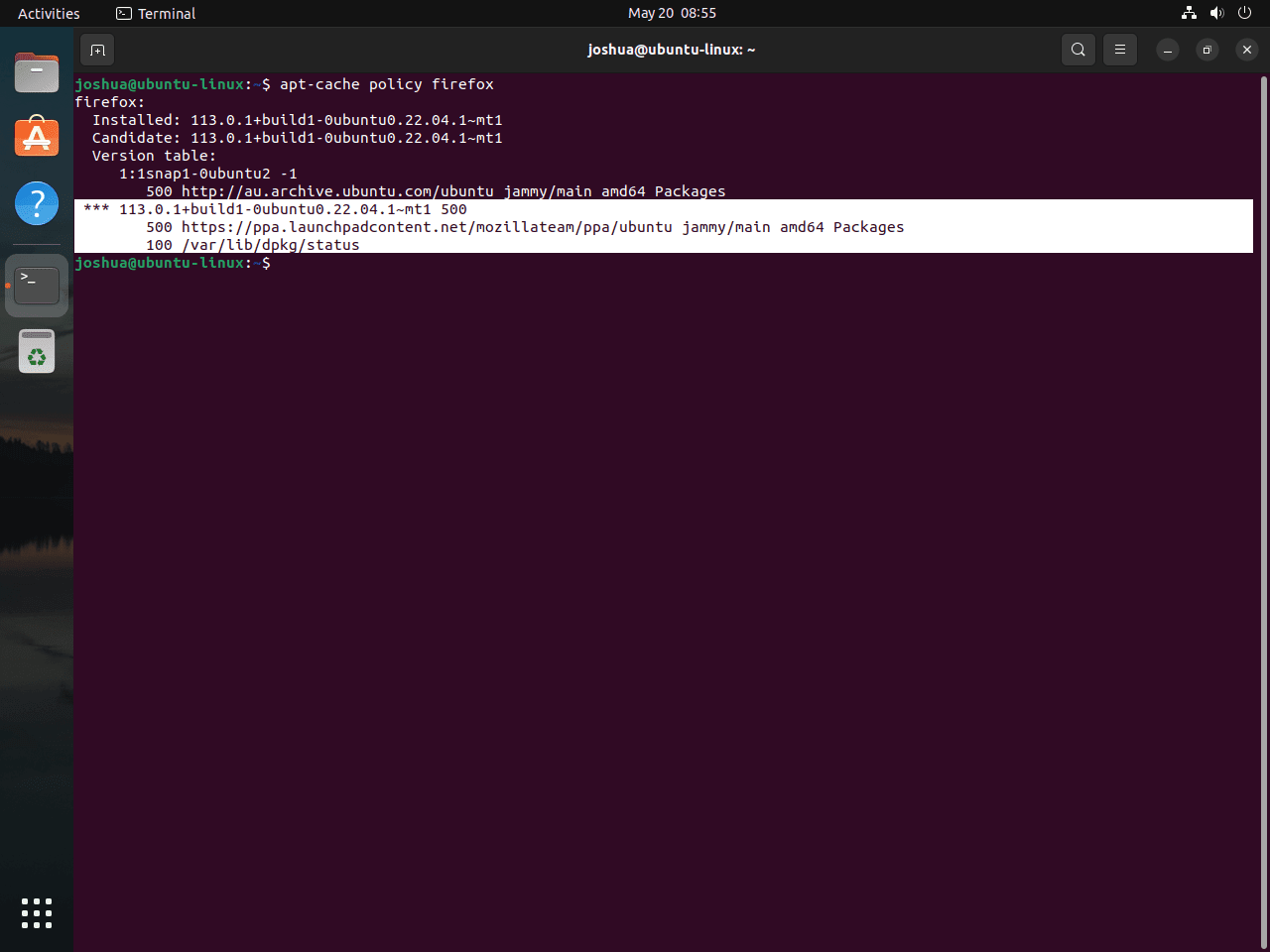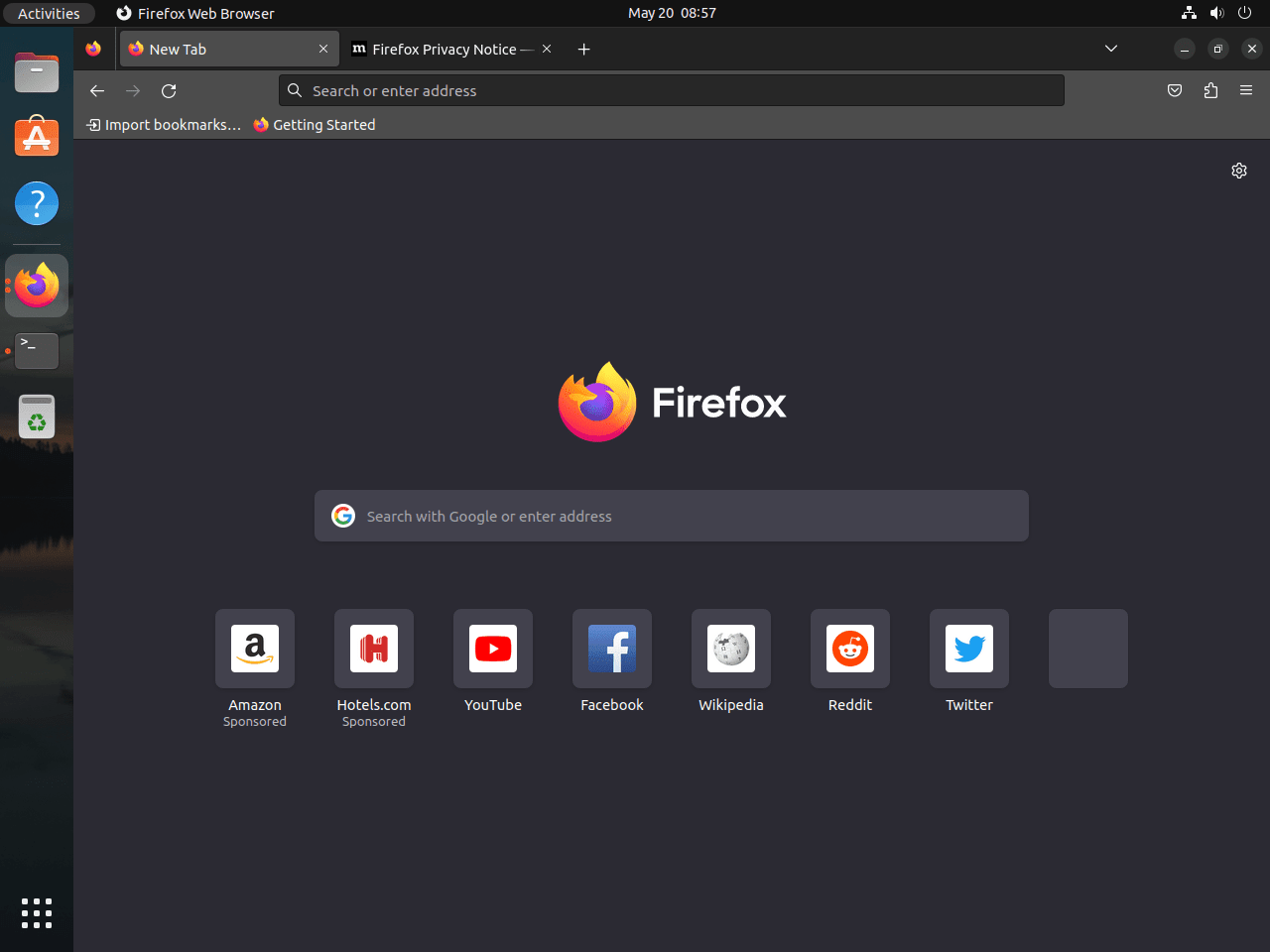Navigating Ubuntu Linux’s software landscape often requires a keen understanding of its packaging systems. One such system, Snapcraft, developed by Canonical, offers a universal packaging solution. Among the applications available as Snap packages, Firefox, known as Firefox Snap, is prominent. While it provides benefits like easy updates and compatibility across Linux distributions, some users might find the need to remove Firefox Snap from Ubuntu for various reasons.
Reasons to Consider Removal:
- Resource Intensity: Despite their user-centric design, Snap packages can be more resource-intensive. This might lead to noticeable performance drops, especially on older hardware setups.
- Integration Hurdles: Firefox Snap, and Snap packages in general, might face challenges in seamless system integration. This can result in potential software limitations and a less-than-ideal user experience.
The beauty of Ubuntu’s open-source framework is its adaptability. If Firefox Snap doesn’t resonate with your needs, Ubuntu’s Mozilla PPA provides an alternative with the latest stable release of Firefox.
This guide will now show the steps to transition from Firefox’s Snap version and discuss how to remove Firefox Snap from Ubuntu and install the browser through the Ubuntu Mozilla PPA.
Remove Firefox Snap From Ubuntu
Disabling Firefox Snap
The first step in this process is to disable the Firefox snap package. Disabling a snap package essentially means it can no longer run or consume system resources, but its data remains intact on your system. This is particularly useful if you intend to re-enable it later. However, in our case, this is a preparatory step for complete removal.
Here’s the command to disable the Firefox snap:
sudo snap disable firefoxAfter running this command, the Firefox snap will be deactivated, meaning it will no longer be able to launch or consume system resources.
Remove Firefox Snap
Once the Firefox snap is disabled, we can proceed with its removal. The command to remove a snap package uninstalls the package and removes all associated data. In this step, we will use the --purge option to ensure that all the data related to Firefox Snap is thoroughly cleaned up from the system.
Run the following command to remove Firefox snap:
sudo snap remove --purge firefoxThis command will uninstall the Firefox snap and purge all associated data, leaving no residual files on your system.
Install Firefox via Ubuntu Mozilla Team PPA
Checking and Installing Required Packages
In our journey to secure and up-to-date browsing with Firefox, the first crucial step involves ensuring that our system has all the necessary tools. This prerequisite check relies on installing two essential packages: software-properties-common and apt-transport-https. The former allows efficient repository management, while the latter equips the package manager to retrieve packages via HTTPS safely.
To affirm the presence of these packages or update them, execute the following command:
sudo apt install software-properties-common apt-transport-https -yImport Firefox Stable Repository
Having equipped our system, we now aim to adopt the stable version of Firefox. This pursuit requires integrating the Firefox Stable Repository into our system. In simpler terms, we add the Personal Package Archive (PPA) maintained by the Mozilla Team to our system’s list of repositories. This PPA is a goldmine for Ubuntu users, directly offering the most recent software versions from the developers.
The command for this PPA integration is as follows:
sudo add-apt-repository ppa:mozillateam/ppa -yWith sudo, we run the command as a superuser. The add-apt-repository script adds the APT repository to our system. The ppa:mozillateam/ppa specifies the PPA we want to add. The -y flag automatically confirms any prompts during the process.
Configure Firefox APT Pinning
Next, we use APT pinning to balance Firefox’s stable version with Snapcraft’s default priority. This technique lets us set custom priority levels for different package sources in Ubuntu. We use the echo command to add the needed configurations directly into the configuration file:
echo -e "Package: firefox*\nPin: release o=LP-PPA-mozillateam-ppa\nPin-Priority: 550\n\nPackage: firefox*\nPin: release o=Ubuntu\nPin-Priority: -1" | sudo tee /etc/apt/preferences.d/99-mozillateamppaBy defining priorities, we express our preferences:
- The Firefox Stable PPA (
Pin-Priority: 550) is our top pick. - The Firefox Ubuntu Snapcraft repository (
Pin-Priority: -1) is deactivated, ensuring Firefox installations via the Mozilla Team PPA instead of Snapcraft.
Step 4: Refreshing the APT Package Index After Firefox PPA Import on Ubuntu
With a new repository on board, we now need to inform APT about the potential new packages it can fetch. This step, called updating the APT package index, is pivotal for successfully retrieving packages from the newly added repository.
To update the APT package index, use the following:
sudo apt updateThis command nudges APT to refresh its list of known packages based on the repositories stipulated in /etc/apt/sources.list and /etc/apt/sources.list.d/. This list will now include the recently added PPA, ensuring your system’s awareness of the most recent Firefox version.
Install Firefox via APT Command
With the foundation laid and preparations done, we can now proceed to the final step: installing the stable version of Firefox.
Execute the following command to install Firefox:
sudo apt install firefox -yThe apt install command tells APT to install the Firefox package. The -y flag automatically confirms any prompts. After running this command, your system will have the latest stable Firefox version, replacing the Snapcraft version.
Verifying the Installation of Firefox via PPA Method
With the installation complete, we want to ensure everything went as planned. The most effective way to confirm that we are now utilizing the APT’s native version with the Ubuntu Mozilla Team’s PPA Firefox stable version is to execute the following command:
apt-cache policy firefoxThis command reveals vital information about the installed version and the repository from which it was fetched. If the output corresponds to the PPA version, you can rest assured that the installation was successful.


Closing Thoughts on Removing Firefox Snap
In conclusion, we’ve explored a comprehensive guide on removing the Snapcraft version of Firefox from an Ubuntu Linux system and replacing it with the stable version from the Mozilla Team’s Personal Package Archive (PPA). This process involves disabling and purging the Snap package, updating the APT package index to recognize the new PPA, and installing the stable Firefox version. Following these steps will provide you with the most recent stable version of Firefox and potentially reduce system resource usage and software limitations associated with Snap packages.


Nils (@ravage:xentonix.net on Matrix) used to have a great script to do not only this, but also export and import all one’s settings: open pages, passwords, and whatnot.
It would be great if someone could recreate that.
He is in the Ubuntu discussions on Matrix (https://matrix.to/#/#support:ubuntu.com), but no longer has the script.
Firefox sync does this.